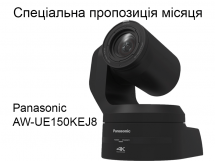| Українська | English | |||||||||||
|
|||||||||||
| News | About company | Service-centre | OB Van/SNG Rental | NextGen Energy Solutions | Contact us |
|
|
Engineering Service, Inc.
» News News As more broadcasters move to IP the thorny issue of video compression is once again raising its head. But could the implementation of compression be a positive change? I believe there are two parts to consider when discussing video compression: we are already doing compression and have been since the 1930s, and compression has come a long way in recent years.
To suggest we are already compressing video might sound a bit flippant, but it is a technical fact. Since the first days of television, we have been sampling infinitely varying light scenes at frame rate, bandwidth limiting the luminance and subsampling the color. And of course, there are no moving pictures in television, just a sequence of still images played back quickly to give the illusion of motion. By the very definition of television and its fundamental process, we are compressing images. So, the question shouldn’t be to compress or not, but instead, how much compression are we going to allow ourselves? For many, MPEG compression was their first real step into reducing bit rates by taking advantage of some of the intricacies of the human visual system. With the option of I-frame only configurations, we could compress images for archiving and library storage without having to worry about motion artifacts. The DCT (Discrete Cosine Transform) has served us well for many years, but even with this, concatenation has always been a challenge especially when considering mpeg-noise. However, the new breed of visually lossless codecs such as J2K and JPEG XS are providing a welcome step change in our perception of compression. The DWT (Discrete Wavelet Transform) takes the place of the DCT, and with the vertical transform used by the JPEG XS only taking a few lines, very low latency is achieved. One of the key benefits of wavelet transforms compared to DCT is that they need fewer parameters to describe the same image with the same perceived quality. I’ve always thought that the term “visually lossless” is a beautiful marketing phrase, but it certainly has a lot of merit. How many encode and decode processes the JPEG XS codec can perform without any visual disturbance is difficult to quantify without testing lots of different source images and codec parameter settings. But as we move more to IP, and hence computer processing, it may well be much easier to process video in its compressed form without having to resort to decoding it into baseband. As resolutions continue to 4K, 8K, and beyond, the need to compress video is becoming more of a necessity than a critique on quality. And the great news is that we really can have our cake and eat it as visually lossless video compression is delivering the quality broadcasters demand and need. « To the list of news |
|
|||||||||||||||||
 |
+38 (044) 593-18-20 +38 (073) 593-18-20 +38 (096) 532-96-82 +38 (095) 532-96-82 Service center Telegram @Engineer_Service |

|
|
|||||
 |
e-mail: engineer-service.tv 15 Vavylovykh str., Kiev, 04060, Ukraine Authorized service centre of Panasonic, Sony, JVC, Fujinon, Canon |
|||||||







